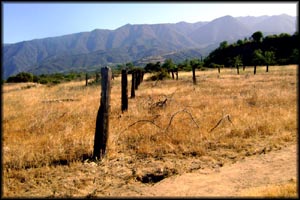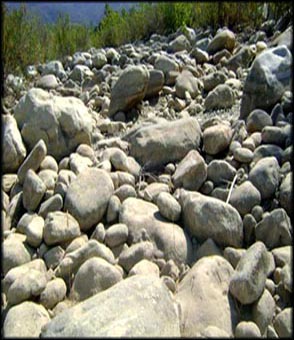Spring 2013
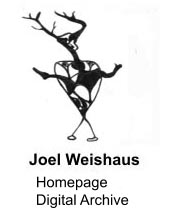
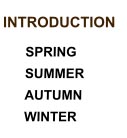
Toward an Ecohumanities
First Thoughts.
In Lisel Mueller's poem, "Monet Refuses the Operation," the artist addresses a surgeon who wants to "correct" his vision: "I will not return to a universe / of objects that don’t know each other ,/ as if islands were not the lost children / of one great continent."
Soon after unpacking,
I noticed
how objects placed in un-
familiar spaces soon recognize
each other again.Thus, one day in May,
the Green Man left his moist northern forest, and knocked our door in this
sere southern valley.
Beginning again, what all creation myths, including contemporary cosmology's Big Bang, have in common is that they exemplify the dominant belief-system of their culture. They all poetize how, from an undifferentiated state, our world suddenly popped out.
Modern cosmology tells us that this universe appeared from a quantum vacuum. However, unlike in traditional creation myths, there is no First Cause, no Creator, no God. I personally find this the most exciting one because it opens a space in which artists can create new myths for a century whose promise of change from former centuries, so stained with intolerance, wars and greed, has yet to begin.
Early humans were born into a world that they didn't create: they had to adapt to it, not it to them, in order to survive. Paleoarchaeologists tell us that at that time the human brain was larger than it is now. We also know that it was capable of amazing creative acts with no precedence. These were intelligent people who imagined into familiar forms natural forces they didn't understand, attempting to control them with strategies of ritual magic, variations of which have lasted into the present era.
The problem is that over hundreds of centuries we've survived and reproduced so successfully that we've populated and "humanized" most of the planet. Even while their mad dream of controlling the world is beginning to collapse, many of our political and economic leaders from the countries that are the most destructive to the environment cling to the belief that they will find technological patches to their devastation of the planet. Caught in a fantasy of unlimited resources and growth, they are unable to admit that their present course is self-defeating, if not borderline psychotic.
Consequently, our amazing species, perhaps unique to this universe, is boiling off the very ingredients needed for its continued survival: the ability to see clearly the underlying motives and ultimate consequences of its actions, and have the courage to act with wisdom, logic and compassion.
Because all their research papers and warnings haven't changed anything, many climate scientists are beginning to realize that the crux of global warming is not a matter of knowledge but psychology. We know how to solve the technological problems, but not the human ones. Technology is an indispensable part of the solution, if its primary motivation is not personal profit but the ecological integrity of the planet.
.................................................................................................................................................................................................................
Dreamed last night that I was waiting for the shock wave from a nuclear explosion to hit the house I was in. Outside, even though it was midday the sky was ominously dark. I thought that when the wave hit the house would collapse, like I'd seen in a 1950s film of a nuclear test in Nevada, or in "Indiana Jones and the Kingdom of the Crystal Skull."
When it finally arrived, like an unstoppable tsunami, there was a loud CLAP...but the house remained standing. "Next comes the heat wave," the person with me said, but I awoke in time to miss it.
One
summer, when I was a young poet living in San Francisco,, I
was given a house for
a
week in Volcano, CA, an old mining town not far from Sutter
Creek where, in 1849, gold was discovered. The building was
once a brewery, built in 1856. Its main
room had thick stone walls that kept it cool even while
outside was like an inferno. Recently, learned that it
is now home to the Volcano Press.
the Ventura River Reserve, where sandy trails loop through scrub land punctuated with sharp rocks and windblown trees.
Lizards and small rabbits scurry across shoe prints, bicycle tires tracks, piles of horse dung, and rotting fenceposts like sentinels who died standing.
Searching for the river, I follow a man who seems to know where he's going. When I catch up he's standing at the rim of a dry riverbed. "Two years ago," he says, "children were swimming here. There was not enough rain this winter, and a shallow snowpack in the mountains." There's no river, I think, that's not a gift from the sky.
He tells me that he's here to study with a shaman, and before this he was a Tibetan Buddhist. "It's too much like Catholicism," I say. He smiles and says that he's an ex-Catholic monk.
I mention Thomas Merton, and he tells me a story about the famous Trappist monk I won't repeat. Then he says that he was in the Catholic Worker Movement. "Dorothy Day," I say. "She lectured me," he replies, "for not going to Mass, and told me I didn't belong in a monastery. That was in Chicago, many years ago."
......................................................................................................................................................................................................................
In the Ventura River Reserve this morning, as fly buzzes me from a mile away I can hear a garbage truck lifting its exhausted load.
I turn, and by my side is the dry odorless river bed in whose bosom boulders and smaller rocks lay exposed to a pitiless sun. I suddenly recall the naturalist Loren Eiseley who spent a lifetime waiting for Halley's comet to return from its loop through space, and died shortly before it appeared again.
......................................................................................................................................................................................................................
At first sight, the landscape looks like a woven blanket, its spirit-thread the trail of a small lizard dragging its ancient tail through the sand.
Are our bones
In their ancestral places
spotted with lizard blood?
[S. Rowland. From, "New Valley"]
Thus it becomes
a living tree whose roots are twisted into prehistoric saurian
sinew and bones.
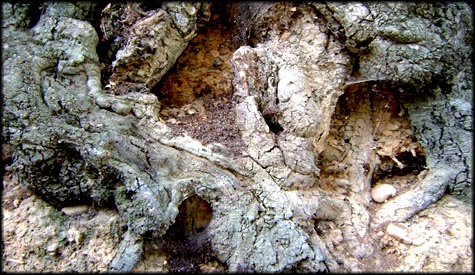
Walking surrounded by these violet, bare, rocky mountains, suddenly there was solitude. Complete solitude. Everywhere there was solitude; it had great unfathomable richness; it had that beauty which is beyond thought and feeling. It was not still; it was living, moving, filling every nook and corner." [J. Krishnamurti, 30 June 1961. Ojai, CA. Krishnamurti's Notebook. Bramdean, UK, 2003.]
This ancient valley is a transitional zone with a borderland psychology. From the West, salty currents of ocean air drive through mountain passes; from the East, the desert walks in and distributes succulent plants.
I'm beginning to see how each wild flower, each weedy stalk, each sustainable tree has its own personality, its own name and unique language that can speak for itself, yet can't be heard by the casual observer. So poets arrive and settle in with shamans and geomancers of invisible worlds.
How old was he, this ancient, emaciated man, hollowed out, withered to the utmost degree beneath the vague folds of a shapeless cloak, the same color as the tall knotted branch upon which he leant? No one on earth could tell." [J. Kessel, The Horsemen. London, 1969.]
.....................................................................................................................................................................................................................
After reading, "Parting with Claude Dalenberg," a poem by Gary Snyder, I remembered meeting Claude, called Ananda, for lunch on a hot Albuquerque afternoon. In his hotel's air-conditioned dining room we discussed Zen monasteries in Japan, American Zen Masters, and the World Parliament of Religions, held in Chicago in 1893, where the eminent Japanese Zen Master, Shaku Soyen, had delivered a talk titled, "The Law of Cause and Effect, as Taught by Buddha." Its translation into English was by a young D.T. Suzuki, who would become a well-known author and professor at Columbia University.
I had just come from the dentist and complimented Ananda on his very white teeth. To which he replied, "They're not mine."
......................................................................................................................................................................................................................
I have a vivid memory of when I heard that Pablo Picasso had died. One evening in April 1973, I was preparing dinner on my hertitage cabin's the two-burner electric stove. With the radio's signal bouncing off mountains, I heard the news and I felt like a huge ghost had ascended.
Every artist's work changes when he dies. And finally no one remembers what his work was like when he was alive. Sometimes one can read what his contemporaries had to say about it. The difference of emphasis and interpretation is largely a question of historical development. But the death of the artist is also a dividing line.[ J. Bereger, "Alberto Giacometti." John Berger: Selected Essays. G. Dyer, ed. New York, 2001.]
There was a time that I asked myself how Pablo Ruiz had become Pablo Picasso. I wanted to know how one steps out from the crowd. Now, 40 years later, it is no longer how?, but why?
.....................................................................................................................................................................................................................
No matter at what it is pointed, a camera sees everything mythologically. This realization circled me back to trusting the natural depth of the camera's eye as akin to with the poet's vision.
Ungrateful he, who pluck'd thee from thy stalk,
Poor faded flow'ret! on his careless way;
Inhal'd awhile thy odours on his walk,
Then onward pass'd and left thee to decay.
[S.T. Coleridge. From, "The Faded Flower"]
During the 1960s and 70s, when the Environmental Movement was budding, some so-called Land Artists were appropriating nature, primarily in the American West, as raw material to be manipulated and transformed into "art," the plans and photographs of which was then marketed by their New York galleries.
Commenting on Michael Heizer’s "monumental" works, Harvard art historian John Beardsley noted that “the purpose of these works is to create art, not simply to make a statement about the landscape.” [Earthworks and Beyond. New York, 2006]
Among several others, there was Walter de Maria, who made “four shallow cuts” in the central Nevada desert with the six-foot blades of a bulldozer. “These cuts form a square with half-mile sides, with two of the sides extending south half a mile at opposite corners. All are oriented north to south or east to west. This is a piece that yields its charms slowly.” [Ibid.]
Monumental was the artists' ignorance of the desert, how much life a bulldozer’s blades kills, and their blindness to the charms of the desert itself, as it is for people for whom the desert is home.
.....................................................................................................................................................................................................................
He was "traveling alone, contemplating the rugged desert country of southern Idaho near the area known as the Craters of the Moon."
As I surveyed the desert, I realized that I felt somewhat awed and a bit threatened by the vast inhospitable landscape that rolled on before me from horizon to horizon. Then I realized with something of a start that my concern was based on my body's inherent survival instincts. [F.J. Hanna, "Dissolving the Center: Streamlining the Mind and Dismantling the Self," In, Transpersonal Knowing. Albany, NY, 2000]
Then his consciousness expanded beyond his worries about the survival of "the 'Fred' entity (that) was clearly a mental construct that was literally using up life-force, wasting energy, and was used as a prop or crutch for being-in-the world." [Ibid.]
.......................................................................................................................................................................................................................
I awoke this morning from a dream in which I am being threatened by a coyote/wolf. I'm told that I must not let him get behind me. So as he circles I turn, pivoting to his wheeling fiery eyes and slathering jaws.
A few hours later, walking up a path I usually take, I was surprised to see my shadow approaching from the opposite direction.
The etymology of surprise is "overtaking," which means that one who would surprise approaches the other from behind. However, from the standpoint of time, not space, it is the surprised person who lags behind. Thus was have two viewpoints.
In The Creation of Woman, Theodore Reik quotes Rabbi Jeremiah ben Eleazar, who said: "Adam was doublefaced, since it is said (Psalm Cxxxix;5) 'Thou hast made me behind and before.'" Reik continues: "Another legend says that Adam and Eve were created back to back, joined at their shoulders; then God separated them by a blow with a hatchet or by sawing them in half."
Was it male and female, or time and space, that were cleaved? If the former, then the Deity did a half-assed job. If the latter, then Einstein's equations healed the rift, and science as religion gained another myth.
.......................................................................................................................................................................................................................
Without looking—
horse navigates hazards
of the stony path.
Clambering down to a river of rocks, walking on what is not longer there, After two years of drought, will the water ever return? Is it climate change, or the wrong deities worshipped?
India's three sacred rivers: the Ganges, Yamuna, and the invisible Sarawati.
"With fewer and fewer exceptions, simple grottoes, streams, mountains, and valleys were now deemed insufficiently holy. As cities shaped like mandalic symbols of wholeness aligned themselves with the cardinal directions or radiated outward from central points of authority, the landscape’s ancient witnesses to acts of human piety found themselves seen as objects, their minerals and waters sold as amulets and trinkets." [C. Chalquist, “Terrapsychology.” New Orleans, 2007] To the extent landscapes beckon to human psyche, many of these places may draw us in causing us to wander unwittingly through the errant movements of a psych-e-cology, not only through its patterns of geography...or along its specific geomorphic pathways...but also deep into its underworld of buried geological rhythms. [M. Cochran, "Eros of Erosion." ReVision, Spring 2010.]
The stuff of paleoarchaeology has been dug up mainly in places that had an era in which stone monuments were raised, or stones in place were painted upon. But the earth itself is creative: rolling, tossing, weathering, building up and eroding down, decorating itself with natural colors and curves. Wherever it hasn't been paved over, a lithic mythology may be seen. All that's needed is a mind that can see what's hidden from ordinary sight.



